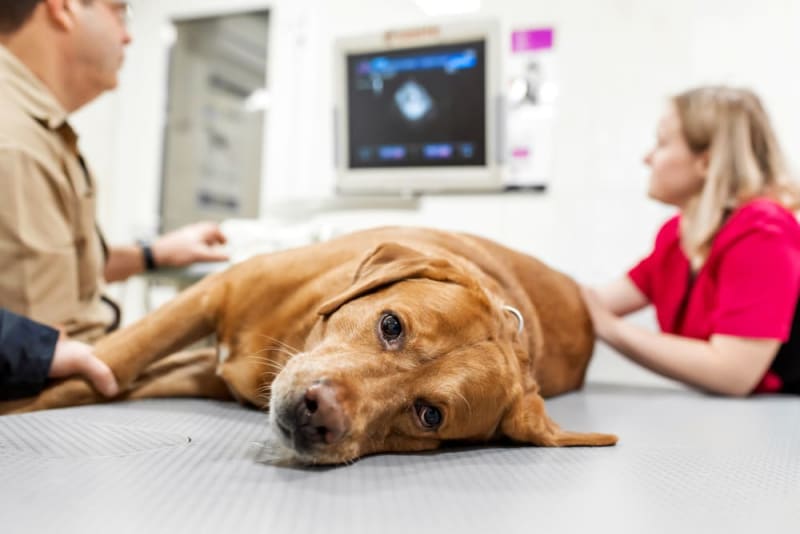Introduction
As pet owners, it’s heartbreaking to see our beloved furry friends suffer from diseases or health issues. However, being aware of common pet diseases and their symptoms can help us take proactive measures to ensure their well-being. In this article, we will explore some of the most common pet diseases, their symptoms, and provide solutions for prevention and treatment.
Common Pet Diseases
1. Canine Parvovirus (CPV)
Canine Parvovirus, commonly known as CPV, is a highly contagious viral disease that primarily affects dogs. It spreads through contact with infected feces or contaminated environments. Symptoms of CPV include vomiting, diarrhea (often bloody), lethargy, loss of appetite, and fever.
To prevent CPV, make sure your dog is up to date on vaccinations and avoid exposing them to potentially contaminated areas. If your dog shows symptoms, it is crucial to seek immediate veterinary care.
2. Feline Upper Respiratory Infections (URI)
Feline Upper Respiratory Infections, also known as URIs or cat flu, are common viral or bacterial infections that affect cats. Symptoms of URIs include sneezing, coughing, runny nose, nasal congestion, fever, loss of appetite, and lethargy.
Prevention of URIs involves regular vaccinations, maintaining good hygiene, and minimizing exposure to sick cats. If your cat shows signs of a URI, consult your veterinarian for proper diagnosis and treatment.
3. Canine Distemper
Canine Distemper is a highly contagious viral disease that affects dogs, foxes, wolves, and other members of the canine family. It is spread through direct contact with infected animals or their bodily fluids. Symptoms of distemper include fever, coughing, nasal discharge, eye discharge, vomiting, diarrhea, seizures, and paralysis.
Prevention of distemper involves vaccinating dogs at an early age and maintaining regular booster shots. If your dog shows symptoms, seek immediate veterinary attention for proper treatment and supportive care.
4. Feline Leukemia Virus (FeLV)
Feline Leukemia Virus, commonly known as FeLV, is a viral disease that affects cats. It is primarily transmitted through close contact with infected cats, such as grooming, sharing food bowls, or biting. Symptoms of FeLV include weight loss, poor appetite, lethargy, enlarged lymph nodes, anemia, and recurrent infections.
Prevention of FeLV includes vaccinating cats, keeping them indoors to minimize exposure to infected cats, and testing new cats before introducing them to your household. If your cat tests positive for FeLV, work closely with your veterinarian to manage the disease and provide supportive care.
5. Canine Heartworm Disease
Canine Heartworm Disease is caused by the transmission of heartworm larvae through mosquito bites. It primarily affects dogs but can also affect cats and other mammals. Symptoms of heartworm disease in dogs include coughing, difficulty breathing, fatigue, weight loss, and a swollen abdomen.
Prevention of heartworm disease involves regular administration of preventive medications prescribed by your veterinarian. Early detection is crucial, as treatment for advanced cases can be challenging. Consult your veterinarian for testing and prevention options.
Solutions for Prevention and Treatment
1. Regular Veterinary Care
Regular veterinary check-ups are essential for preventing and managing pet diseases. Vaccinations, parasite prevention, and routine examinations can help detect early signs of illness and provide appropriate treatment.
2. Hygiene and Cleanliness
Maintaining good hygiene and cleanliness can reduce the risk of infection for your pets. Regularly clean their living areas, food bowls, and litter boxes. Proper hand hygiene is also crucial, especially after handling sick animals.
3. Vaccinations
Vaccinations are a vital component of preventing many common pet diseases. Follow your veterinarian’s recommended vaccination schedule to ensure your pets are protected.
4. Parasite Prevention
Regularly administer preventive medications to protect your pets from fleas, ticks, and heartworms. Consult your veterinarian for the most suitable preventive options based on your pet’s needs and lifestyle.
5. Proper Nutrition
A balanced diet plays a crucial role in maintaining your pet’s overall health and immune system. Provide them with a high-quality diet recommended by your veterinarian.
6. Stress Management
Stress can weaken your pet’s immune system and make them more susceptible to diseases. Provide them with a safe and comfortable environment, regular exercise, mental stimulation, and plenty of love and attention.
7. Prompt Veterinary Attention
If you notice any unusual symptoms or behavior in your pet, seek prompt veterinary attention. Early diagnosis and treatment can significantly improve the outcome for many diseases.
Conclusion
Being aware of common pet diseases, their symptoms, and taking proactive measures for prevention and treatment are essential for ensuring the well-being of our furry companions. Regular veterinary care, proper hygiene, vaccinations, parasite prevention, a balanced diet, stress management, and prompt veterinary attention are key factors in keeping our pets healthy. By staying informed and taking preventive measures, we can help protect our pets from common diseases and provide them with a happy and healthy life. Remember, if you have any concerns about your pet’s health, always consult with your veterinarian for professional advice and guidance.

